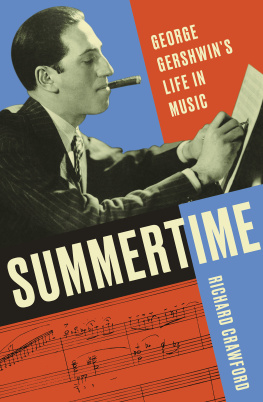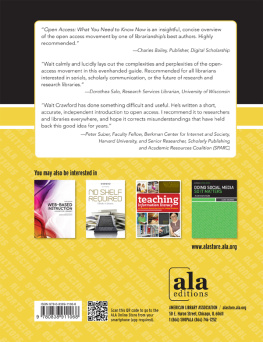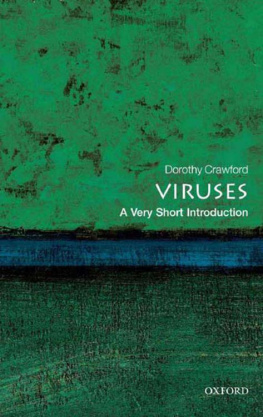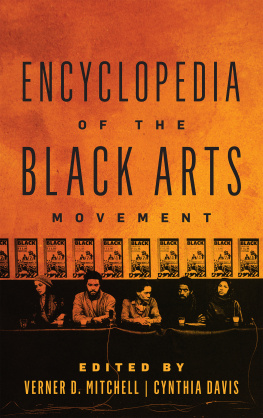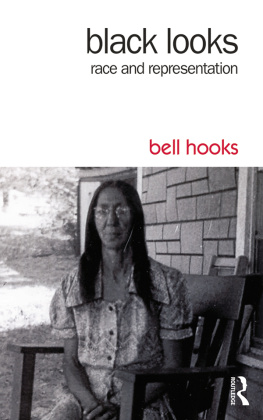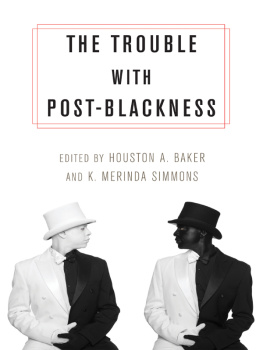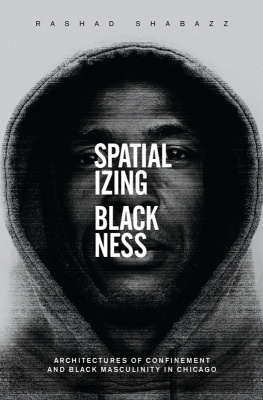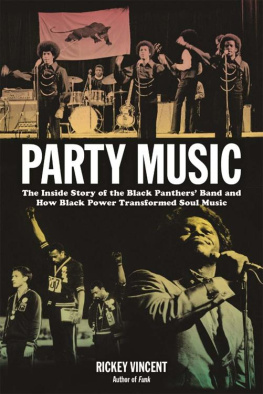Crawford - Black post-blackness: the black arts movement and twenty-first-century aesthetics
Here you can read online Crawford - Black post-blackness: the black arts movement and twenty-first-century aesthetics full text of the book (entire story) in english for free. Download pdf and epub, get meaning, cover and reviews about this ebook. year: 2017, publisher: University of Illinois Press, genre: Romance novel. Description of the work, (preface) as well as reviews are available. Best literature library LitArk.com created for fans of good reading and offers a wide selection of genres:
Romance novel
Science fiction
Adventure
Detective
Science
History
Home and family
Prose
Art
Politics
Computer
Non-fiction
Religion
Business
Children
Humor
Choose a favorite category and find really read worthwhile books. Enjoy immersion in the world of imagination, feel the emotions of the characters or learn something new for yourself, make an fascinating discovery.
- Book:Black post-blackness: the black arts movement and twenty-first-century aesthetics
- Author:
- Publisher:University of Illinois Press
- Genre:
- Year:2017
- Rating:5 / 5
- Favourites:Add to favourites
- Your mark:
- 100
- 1
- 2
- 3
- 4
- 5
Black post-blackness: the black arts movement and twenty-first-century aesthetics: summary, description and annotation
We offer to read an annotation, description, summary or preface (depends on what the author of the book "Black post-blackness: the black arts movement and twenty-first-century aesthetics" wrote himself). If you haven't found the necessary information about the book — write in the comments, we will try to find it.
Black post-blackness: the black arts movement and twenty-first-century aesthetics — read online for free the complete book (whole text) full work
Below is the text of the book, divided by pages. System saving the place of the last page read, allows you to conveniently read the book "Black post-blackness: the black arts movement and twenty-first-century aesthetics" online for free, without having to search again every time where you left off. Put a bookmark, and you can go to the page where you finished reading at any time.
Font size:
Interval:
Bookmark:

THE NEW BLACK STUDIES SERIES
Edited by Darlene Clark Hine and
Dwight A. McBride
A list of books in the series appears
at the end of this book.
The Black Arts Movement and
Twenty-First-Century Aesthetics
MARGO NATALIE CRAWFORD

2017 by the Board of Trustees
of the University of Illinois
All rights reserved
1 2 3 4 5 C P 5 4 3 2 1
 This book is printed on acid-free paper.
This book is printed on acid-free paper.
Library of Congress Control Number: 2017931625
ISBN 978-0-252-04100-6 (hardcover)
ISBN 978-0-252-08249-8 (paperback)
ISBN 978-0-252-09955-7 (e-book)
for the homespun who trespass
This book aims to deepen our understanding of the 1960s and early 1970s Black Arts Movement as well as early twenty-first-century African American literature and visual culture. My desire to bring black and post-black together was sparked by the vibrant work emerging in studies of the 1960s and 1970s Black Arts Movement and twenty-first-century black art. I have benefited immensely from scholars revisiting the Black Arts Movement as well as scholars who are paving the way for a twenty-first-century new wave of black aesthetic theory. My bringing together of the Black Arts Movement and the twenty-first century breaks out of the typical approach to these movements and uncovers black post-blacknessa new way of thinking about radical black aesthetics as a constant push to what is unimaginable and a constant holding on to the radicalness of black life in an antiblack world.
The entire jam session of the Black Arts Movement was a love supreme. In the poem Numbers, Letters, Amiri Baraka writes, There is no guilt in love. Love can be revolutionary. This book was a jam session since its very beginning, and I was fortunate to jam with so many kindred spirits. The vibrating edge of the ensemble included Amiri Baraka, Haki Madhubuti, Eleanor Traylor, Sonia Sanchez, Cheryl Clarke, Kalamu ya Salaam, Nelson Stevens, Quo Vadis Gex-Breaux, and Jerry Ward, who led me to the deep water. I was blessed to wade in the water with their precious counsel.
Key conferences and collaborations shaped the flow of this book. Many panels pushed me to think about how the framing of the Black Arts Movement has shaped nascent attempts to frame and theorize twenty-first-century black literature and visual art. I thank Aldon Lynn Nielsen, Evie Shockley, Christina Sharpe, Meta DuEwa Jones, Carter Mathes, Erica Edwards, GerShun Avilez, James Smethurst, Fred Moten, Shana Redmond, Keith Leonard, Dana Williams, Howard Rambsy, Soyica Colbert, Robert Patterson, La Marr Jurelle Bruce, Kai Green, Stphane Robolin, Tsitsi Jaji, Rebecca Wanzo, and Rizvana Bradley for all of the BangClash we have created in our jam sessions.
Being a part of Houston Baker and Merinda Simmonss edited volume The Trouble with Post-Blackness was tremendously useful. The earlier conference, The Trouble with Post-Blackness, at Rochester University was a phenomenal gathering of scholars with diverse approaches to twenty-first-century black studies. The Callaloo conferences have also provided an ideal audience. Callaloo s bringing together of literature and visual art has greatly nurtured my own breaking of the boundaries between literary and visual studies. I thank Charles Rowell for his visionary leadership.
In the visual art zone, the Porter Colloquium, sponsored by Howard Universitys art history department, has been an intellectual home. The artists I met after delivering one of the 2016 Porter Colloquium keynotes have greatly enhanced this books approach to black abstraction. I thank Ben Jones, Kevin Cole, Adrienne Gaither, and Ernest Shaw for sharing their work during the books final stages. During the early stage of the book, Rebecca Zorach asked me to be one of the writers for the 2013 AfriCOBRA exhibit at the DuSable Museum of African American History. These direct connections with art historians gave me the wings to do this word and image work.
I thank the following kindred spirits for being non-guiding lights in this crucial disorder (as Robert Reid-Pharr describes it) that we might call global black studies: Greg Thomas, Sylvia Wynter, Fred Moten, Souleymane Bachir Diagne, Hortense Spillers, Cheryl Wall, Houston Baker, Mark Anthony Neal, Aldon Lynn Nielsen, James Smethurst, Kokahvah Zauditu-Selassie, Farah Jasmine Griffin, Jennifer De Vere Brody, Robert Reid Pharr, Imani Perry, Sharon Holland, Kevin Quashie, Herman Beavers, Salamishah Tillet, Bill Maxwell, Erica Edwards, Evie Shockley, Brent Edwards, E. Patrick Johnson, Jeremy Glick, L. H. Stallings, and Dr. James Turner.
At Cornell University, Dagmawi Woubshet and Lyrae Van Clief-Stefanon have been friends, air, food, water, and pure love. So many dimensions of this book have been nurtured by the Cornell jam session with Dagmawi Woubshet, Lyrae Van Clief-Stefanon, Rich Richardson, C. Riley Snorton, Carole Boyce Davies, Gerard Aching, Naminata Diabate, Mary Pat Brady, Noliwe Rooks, Satya Mohanty, Helena Viramontes, and Ken McClane. While teaching and mentoring Donelle Renita Boose, Robert Jiles, Danielle Fuentes Morgan, Elena Guzman, Elizabeth Alexander, Marquis Bey, Anisha Warner, Esmeralda Arrizon-Palomera, Nasrin Olla, and Maya Durham, I discovered new dimensions of this book.
Dawn Durante has been an exquisite editor whose support throughout the publication process has been invaluable. I thank Matt Mitchell for being such an ideal copyeditor. Jennifer Comeau directed the production of the book with precious care and commitment. The two external reviewers gave precious insight about the paradigm shifts this book could set in motion. For me, the book was spoken into existence through these reviews. I thank Christopher Harter and the staff at the Amistad Research Center at Tulane University. I also thank Third World Press and the Moorland-Spingarn Research Center.
I thank Koritha Mitchell for being my amazing accountability partner during the year this book was completed. I thank Yomaira Figueroa for finding Half-Past Nation Time and for being the beautiful spirit she is. I thank Jennifer De Vere Brody for our vacations during hard times. I finished the Harlem Renaissance chapter while enjoying the Harlem Renaissance pad that Nicole Fleetwood offered. I thank Kalamu ya Salaam for all of the interviews and BLKARTSOUTH connections he provided and for the second line we stumbled upon. I thank Quo Vadis Gex-Breaux for her precious poetry and for opening up a whole new perspective on black feminism during the Black Arts Movement. I thank Kokahvah Zauditu-Selassie for bringing hum to New Orleans as I finished the book, and I thank my dear sister Syeeda Naima, my brother-in-law Kwasi, and my amazing niece Zoe for bringing their joy to New Orleans during that final writing stage. I thank George Hutchinson for the post-emergency surgery life of blessings, hope, and bells.
The Black Arts Movement was a turned corner and a cornerstone of my fathers (Bob Crawfords) life work (19392015). His phenomenal photographic archive first led me to see the nuances and textures of this complicated cultural movement. Amiri Baraka signed my fathers copy of Black Art (1966) in the following manner: For Bob Crawford The Seeing Eye + Margo, Asante for being so Black. I cherish that seeing eye. This book is dedicated to him and others who remain grounded enough ( homespun ) to see the movements within movements.
Font size:
Interval:
Bookmark:
Similar books «Black post-blackness: the black arts movement and twenty-first-century aesthetics»
Look at similar books to Black post-blackness: the black arts movement and twenty-first-century aesthetics. We have selected literature similar in name and meaning in the hope of providing readers with more options to find new, interesting, not yet read works.
Discussion, reviews of the book Black post-blackness: the black arts movement and twenty-first-century aesthetics and just readers' own opinions. Leave your comments, write what you think about the work, its meaning or the main characters. Specify what exactly you liked and what you didn't like, and why you think so.


